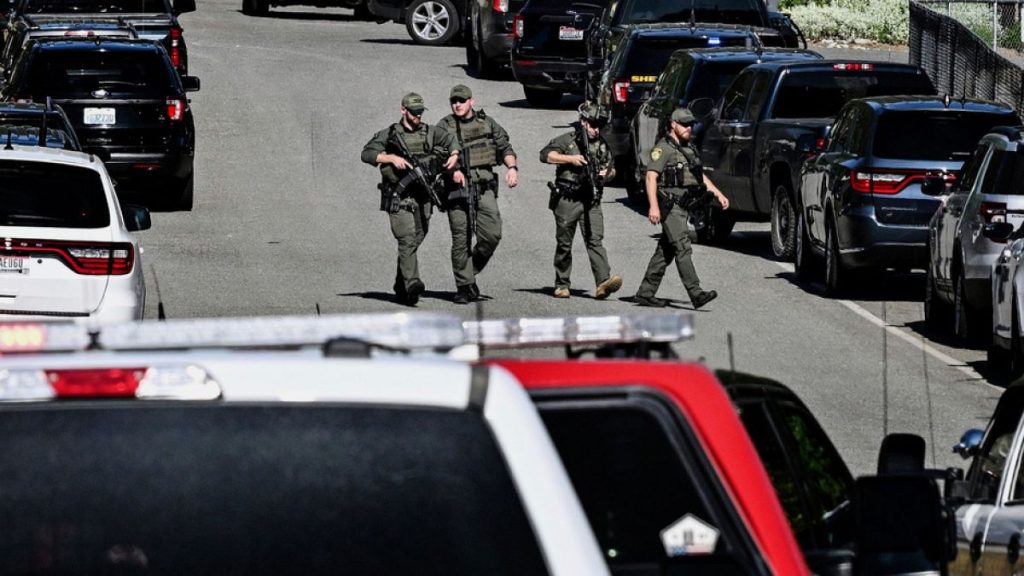In a tragic incident in Idaho, two firefighters were fatally shot while battling a wildfire, having been ambushed by sniper fire. The attack unfolded on a Sunday afternoon, leaving the local community in shock and prompting a swift response from law enforcement. As officials reported ongoing gunfire, the situation has highlighted significant concerns around the safety of first responders in the line of duty.
| Article Subheadings |
|---|
| 1) The Ambush on Firefighters |
| 2) Response from Law Enforcement |
| 3) Community Reaction |
| 4) Ongoing Investigation |
| 5) The Role of First Responders |
The Ambush on Firefighters
The harrowing event occurred when firefighters were dispatched to a wildfire around 1:30 p.m. local time. Shortly thereafter, sniper fire erupted, creating an extremely dangerous scenario for those on the ground. The Kootenai County Sheriff’s Office reported that the shots were fired approximately thirty minutes after the initial call for emergency assistance.
As fire crews attempted to extinguish the blaze, they found themselves under direct attack. Sheriff Bob Norris stated that it was uncertain how many suspects were involved or how many casualties there might be among the firefighting team. Despite the challenges, fire crews remained on site, continuing their work whilst enduring what was described by local authorities as a “heinous attack.”
Response from Law Enforcement
Law enforcement quickly arrived at the scene, with authorities actively taking sniper fire. According to Sheriff Norris, their tactical teams were equipped with instructions to return fire and neutralize any threat. The situation remained fluid, with sniper fire reported even into the late afternoon.
Governor Brad Little publicly condemned the attack, calling it a direct assault on the courage of firefighters. He urged the citizens of Idaho to offer their prayers for the deceased firefighters and their mourning families. In addition, the FBI deployed tactical teams to assist local law enforcement in responding to the emergency.
Community Reaction
The ambush has sparked outrage within the community and beyond, with many voicing their concerns over the safety of first responders. Local Republican leaders characterized the incident as a “vicious attack” against those who risk their lives to protect others. Condolences poured in from various sectors, highlighting the essential role firefighters play in community safety.
In the aftermath of the event, citizens were advised to stay clear of the area due to the ongoing threat. An emergency alert was issued, emphasizing the danger and the active status of the fire, which could not be contained while gunfire persisted in the area.
Ongoing Investigation
Authorities are currently investigating the incident with utmost urgency. The uncertainty surrounding the number of suspects continues to plague investigators. They focus on identifying the assailants and understanding their motives.
Sheriff Norris indicated that officials are working to establish a timeline and compile evidence from the scene. As of late afternoon, there were ongoing apprehensions about other individuals potentially involved, suggesting that law enforcement might face further confrontations. The severity of the situation has drawn attention from state and federal agencies keen on ensuring the safety of those engaged in the firefighting efforts.
The Role of First Responders
This incident serves to remind the public of the risks that firefighters face regularly. Engaging in both firefighting and rescue operations, they put their lives on the line to protect communities during crises. The attack on these brave individuals raises serious questions about the dangers present in their profession.
Firefighters are trained to handle various emergencies, yet they are often vulnerable to unforeseen risks, including violent confrontations. As discussions unfold following the ambush, local and state officials may need to reassess how to better safeguard first responders in the field.
Beyond physical risks, the psychological toll of such events cannot be overstated, pushing conversations about mental health support and resources for first responders to the forefront. In light of the ambush, community leaders may have to implement new strategies to ensure that those who bravely serve in these critical roles receive the support they need.
| No. | Key Points |
|---|---|
| 1 | Two firefighters were shot and killed while responding to a wildfire in Idaho. |
| 2 | The attack was described as a “heinous” ambush by local sheriff officials. |
| 3 | Ongoing gunfire prevented emergency teams from accessing the area. |
| 4 | Local, state, and federal officials are working together on responding to the incident. |
| 5 | The event highlights the acute dangers that first responders face in the line of duty. |
Summary
The ambush of firefighters in Idaho has raised significant concerns regarding the safety of first responders in the field. As investigations continue and more details emerge, the community reflects on the dedicated service of emergency personnel. It underscores the risks they face daily, particularly in hostile environments, prompting a reevaluation of safeguards and support systems designed to protect those who serve.
Frequently Asked Questions
Question: What happened during the incident in Idaho?
Two firefighters were shot and killed while responding to a wildfire, having been ambushed by sniper fire. Authorities reported that the attack occurred shortly after their arrival at the scene, creating a dangerous environment.
Question: How is law enforcement responding to the incident?
Local law enforcement, along with federal agencies, have deployed tactical teams to confront the ongoing threat. They are actively investigating the situation and aiming to locate and neutralize any remaining suspects.
Question: What implications does this incident have for first responders?
The ambush raises questions about the safety of first responders in volatile situations. It has highlighted the risks they face, emphasizing the need for enhanced protections and mental health support for those in emergency services.


